Qeshm Island is a precious gem in the crown of the Persian Gulf. A collection of beautiful rocky, sandy and muddy beaches, a variety of historical, cultural and archeological legacies, and a diverse range of geological heritages have made Qeshm Island the first UNESCO-listed Geopark in Iran. There, you’ll be welcomed by a wide spectrum of beauties and an unforgettable experience of pleasure. Beside its natural attractions, its sweet local culture, and its tasty local dishes, Qeshm Island also treats you to interesting local bazaars. Like to find out more? Then stay with me! (Best Iran Island Tours)
Contents
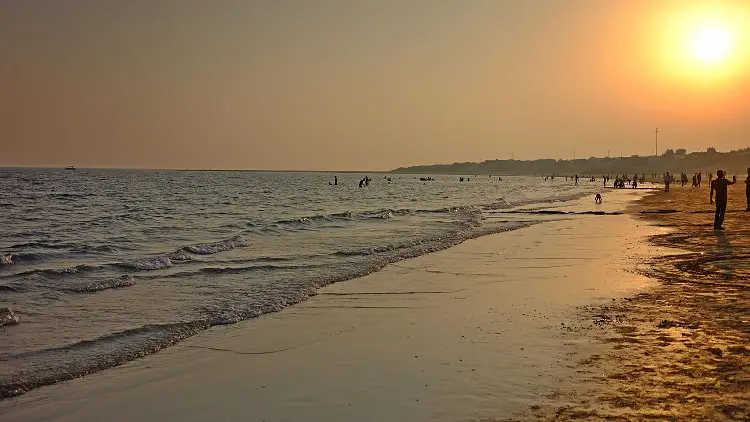
Where is Qeshm Island
As the largest island in the Strait of Hormuz, Qeshm Island is in southern Iran, Hormozgan Province. It is surrounded by Bandar Abbas in the north, Larak Island in the east, Hengam Island in the south, and Abu Musa and greater Tunb and Lesser Tunb Islands in the southwest.
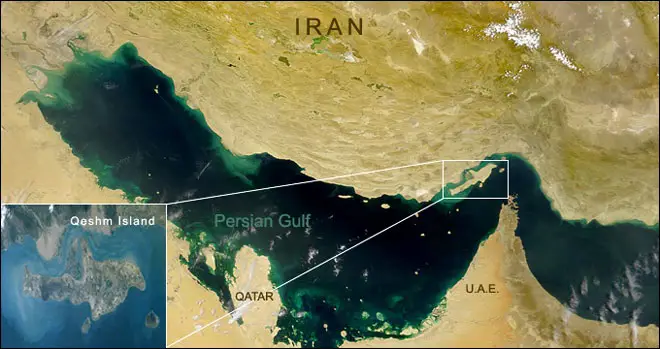
The Story of Qeshm Island
People have been living in this island from before the arrival of Islam in Iran. After the advent of Islam, the Muslims captured the island and that’s how everything started to take a new form. Over years, the island saw different rulers, Europeans arrived in the island, and the Portuguese ruled over it for a while. In Qajar era (1789–1797AD), this colonization took a legal form. But the island was returned to Iran after the fall of Qajar dynasty.

The Top Attractions of Qeshm Island
Qeshm Geopark
Part of Qeshm Island is the first geopark of Iran registered in UNESCO. Stretching from Tabl and Salakh islands in the east to Goori and Kani villages in the west, the 30-thousand-hectre geopark is in the west of the island. The geopark is bordered with beaches in its northern and southern end. As one of the most special geoparks of the world, Qeshm geopark features a range of geological phenomena and a variety of sceneries. From beaches and mangrove forests to spectacular nature-made statues, this wonderland has something to impress you with at each step: Namakdan Cave, Valley of Stars, the Roof of Qeshm, Valley of Statues, Shur Valley, Chahkooh Canyon, Ghazi Valley, Naz Islands, Hara Mangrove Forests, Turtles Nesting Beach, Laft Village, Xorbas Cave, and Dokoohak Birds’ Wetland.
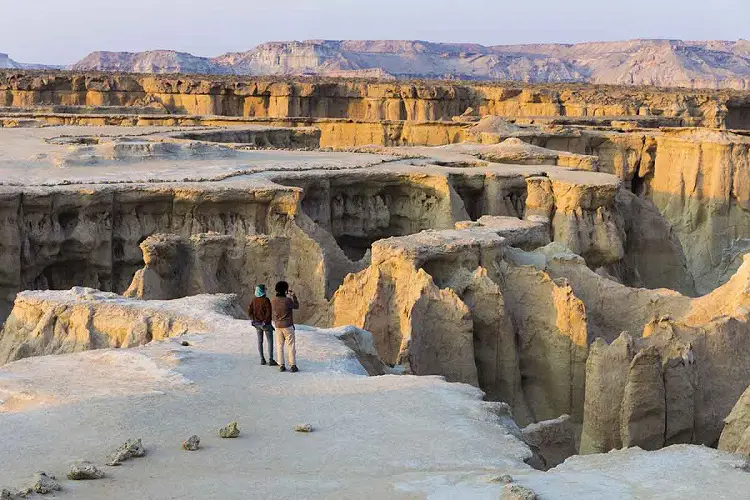
Namakdan Cave
Namakdan (saltshaker) Cave is one of the world’s longest salt caves. Salt springs and salt domes have covered Namakdan Mountain with breathtaking white spectacles. But a visit to this cave is not for everyone because it challenges your physical capabilities. Plus, Namakdan cave is dark and you need mountaineering equipment for an adventure into it.
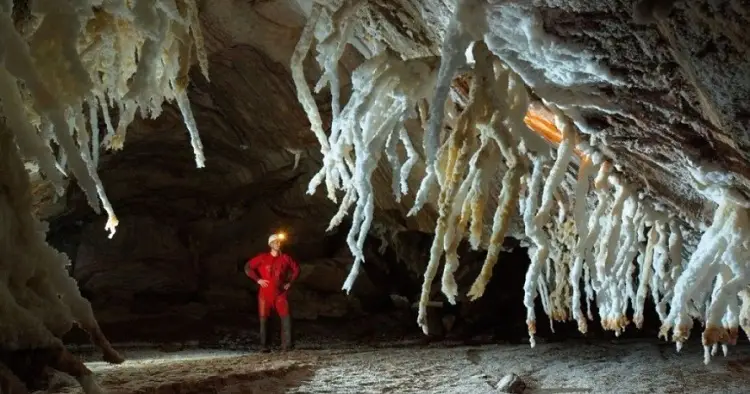
Chahkooh Canyon
Chahkooh Canyon is in fact 2 valleys that are standing perpendicular to each other. The porous walls of the canyon are what give it its outstanding look. The name Chahkooh (meaning mountain well) also has an interesting story. Years ago, since it used to rain scarcely but heavily in this region, locals had dug wells at the bottom of this strait to preserve the rainwater for months.
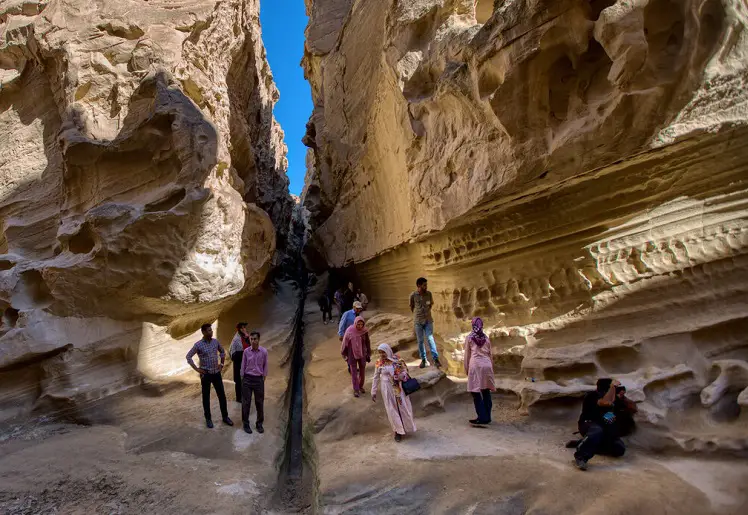
The Valley of Stars
The long process of sand and rock erosion over years has created a valley in the southeast of Qeshm Island: the Valley of Stars. This beautiful valley has hidden legendary stories in its heart. Based on one of these stories, a star hit the ground and created this otherworldly valley.
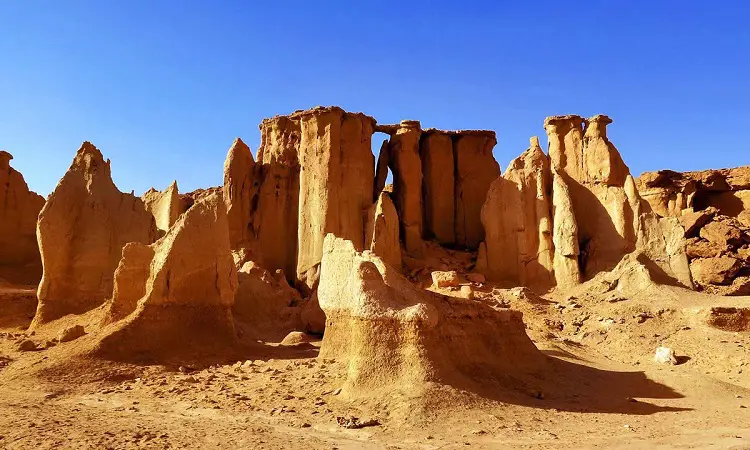
The Roof of Qeshm
You can enjoy one of the most incredible views in the island atop its highest point: the Roof of Qeshm. Over there, you can get a stunning outlook of the northern jungles and beaches of the Persian Gulf.
Laft Village
If you are into traditional and historical houses and Persian architecture, don’t miss a visit to Laft Village on your trip to Qeshm. This village is one of the most ancient places left in the south of Iran and the only one that features attractive adobe wind towers.
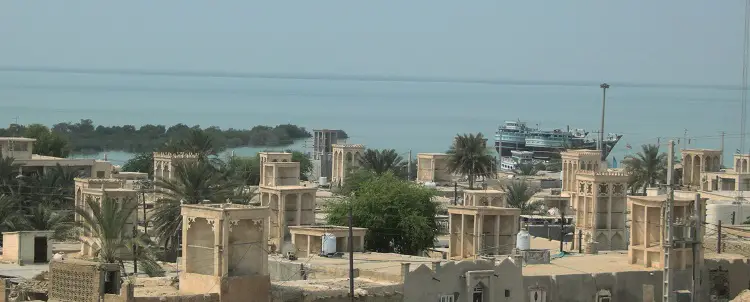
Tela (TalAb) Wells
In hot climates, water is as precious as gold and preserving this gold is highly important. That’s why a collection of wells in Laft Village were named as Tela (gold) wells. The locals filled the bottom of these wells with chalk and when it rains, the water that gathers in them stays cool and drinkable. Apart from their use, these wells have created an attractive view that is definitely worth a visit.
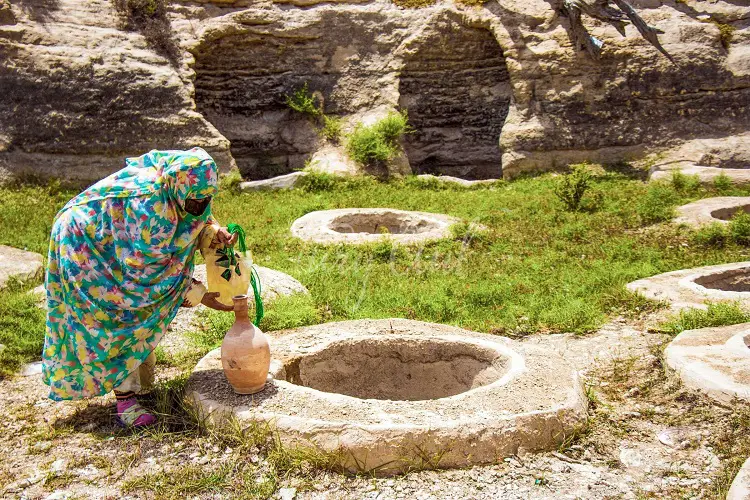
Xorbas Caves
A long time ago, a village known as Xorbas (or Khorbas) used to be one of the most thriving parts of Qeshm Island. This village is encircled with short and high coral hills. On the face of a high cliff facing the village, you can see the openings to a few charming caves: Xorbas Caves. These ancient geological phenomena are 20 to 30-meter from the ground level. To the north of these caves, you can check out the ruins of a historical castle and a very old cemetery.
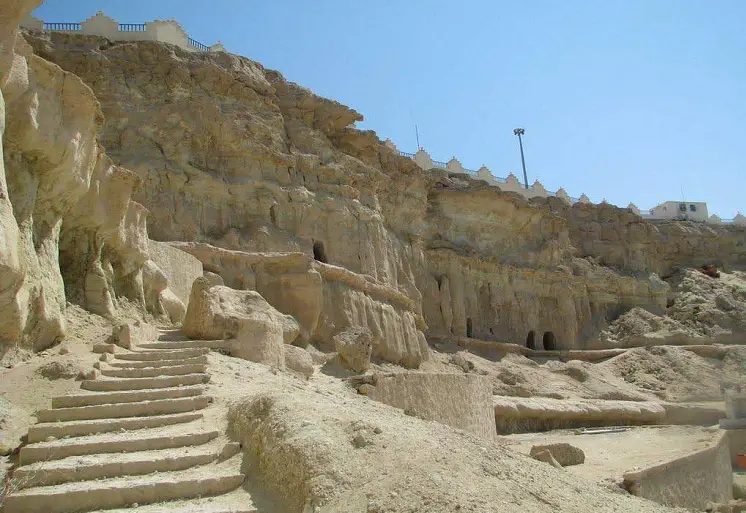
The Valley of Statues
Many mistake the Valley of Statues with the Valley of Stars. But these two beautiful valleys each have their very own unique look. The existence of a collection of huge statues that were made by natural forces gives this vast valley its particular name. Can you believe that the whole island was under water some day? In the Valley of Statues, you can also find a lot of fish and shellfish fossils that hold the clue to its historical background.
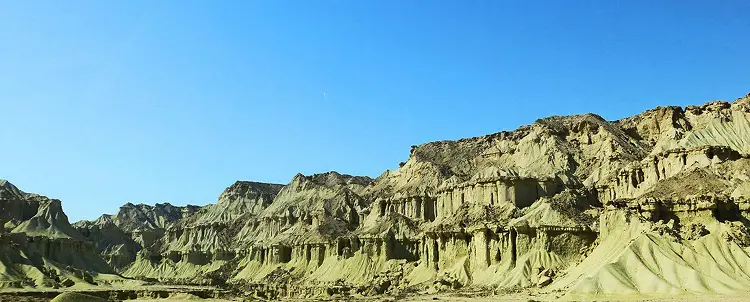
The Portuguese Castle
Another must-see sight in Qeshm Island is the Portuguese Castle. The famous Portuguese seafarer who built it made it a strategic point that kept the Portuguese forces dominant over the Persian Gulf for about 110 years.
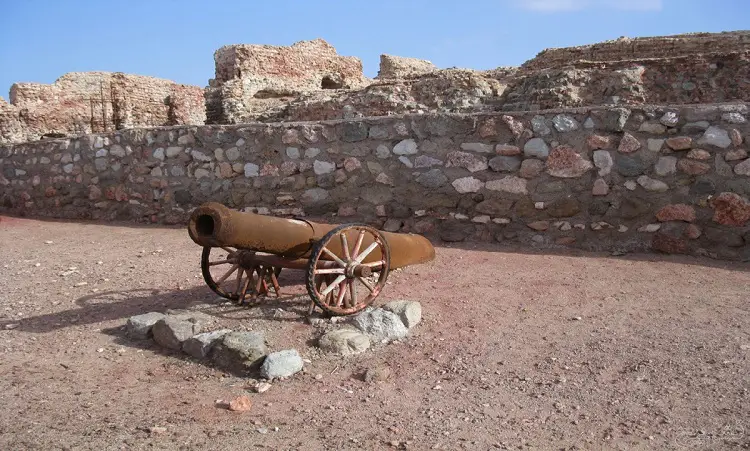
Naz Islands
Naz Islands is different from all islands you’ve ever seen. In low tide, a narrow line of glittering sand connects these 3 little islands to Qeshm Island. Although this spectacle is short, you can get yourself to Naz Islands and enjoy the beauties of the Strait of Hormuz and Larak Island atop its heights.
Hengam Island
Hengam, the island of playful dolphins and untouched culture, is 2 kilometers to Qeshm Island. This small adorable island is one of the top attractions of the region. To get to Hengam Island, you’ll have to get a boat from Qeshm Island. On your ride toward there, the first thing that catches your eyes is the clean sand and the clear water that shine under the sun. At this part of the island, you can see many rocks that are covered with colorful shells. Find out more about this amazing island at our Hengam Island blog.
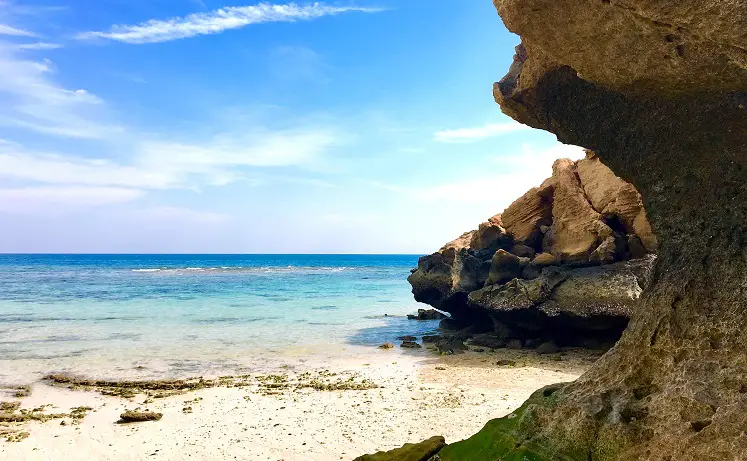
Hara Mangrove Forests of Qeshm Island
Hara Mangrove forests are rare coastal jungles that play the game of hide and seek with tidal cycles. These marvelous charms of Qeshm Island live in salty water and reach up to 6 meters. Walking along these jungles in low tide or enjoying a boat ride there in high tide, you will meet green trees that seem to have grown through a pile of wood. The beautiful piles are in fact their roots!
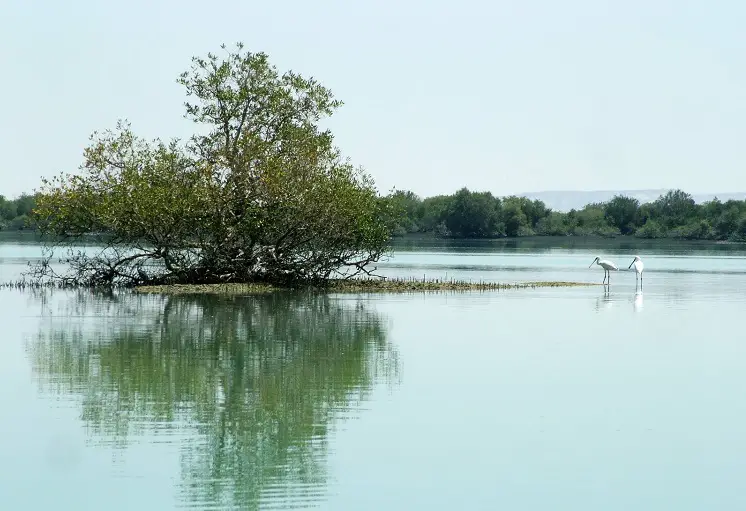
Qeshm Island’s Shib Deraz Village
Qeshm Island has a lot of seaside villages. Among them, Shib Deraz Village is the most popular. Why? Because of its turtles. The beaches of this village are the destination of different animals in different seasons. Among them, Hawksbill turtles are the most attractive. They come to the sandy beaches of Shib Deraz Village from around mid-March to mid-May for nesting. The spot where dolphins come to the surface is also not far from this village.
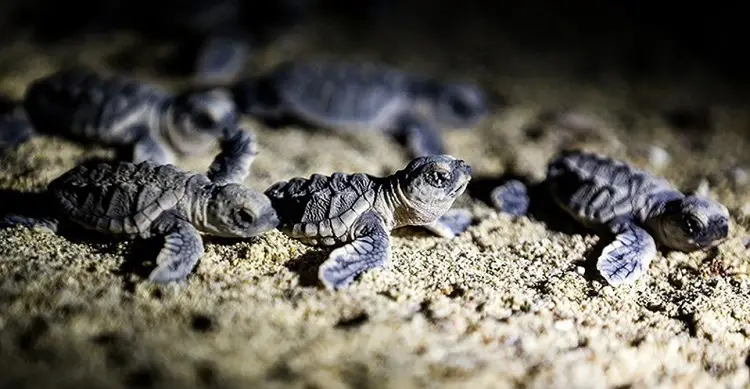
What to Eat in Qeshm Island
Mahi Bereshteh (Crispy Fish)
Qeshm is an island and so the locals are experts at making sea food. They stuff redfish and javelin fish with coriander, dill, onion, and different spices and then make it crispy.
Colomba
Colomba is a local food made of wheat, fish, and aromatic herbs. For cooking this dish, they first pour wheat into water and then add fish they’ve mixed with vegetables.
Berenj Dishoo
The inhabitants make this tasty dish with date syrup. After boiling the syrup, they add some cooked rice and let the water evaporate. They finally serve it with fish.
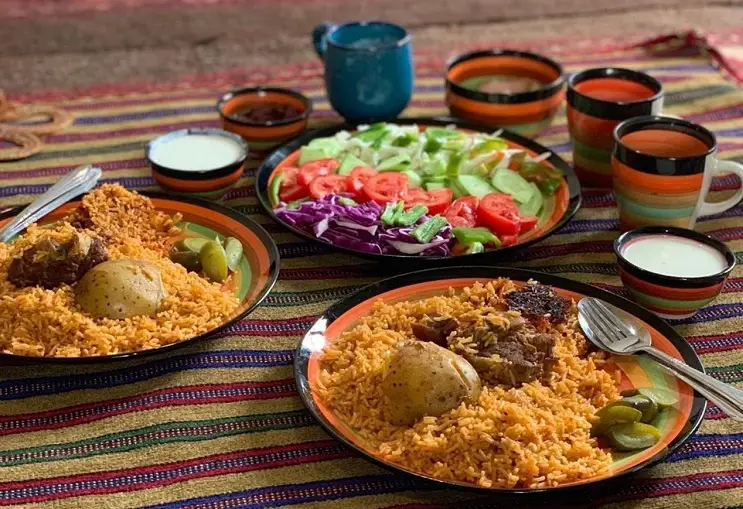
How to Get to Qeshm Island
You can get a flight to Qeshm Island from different cities like Tehran, Mashhad, Rasht, Shiraz, Isfahan, Kish, and Dubai. You can also get yourself to Bandar Abbas’s Haghani Port and make your way toward Qeshm Island with motorboats that can get you there every 20 minutes. The boat ride from port to port takes about 40 minutes.
The Best Season to Visit Qeshm Island
Qeshm Island is in the south of Iran, a place famous for a warm and humid climate. The hottest days of Qeshm Island are from July to August. But the best time to visit the island are January and February. The temperature at this period ranges from 16 to 46°C.
Culture and Customs among Qeshm Islanders
Being far from other cities has blessed Qeshm Island with a culture that is less affected by other cultures. So Qeshm islanders have their own customs. What you’ll see in these locals is a warm heart, a warm behavior, and a deep sense of unity. Considering that Islam is the dominant religion in the island, their customs mainly revolves around religious ceremonies and beliefs. Among these ceremonies are the celebration of prophet Mohammad’s birthday and ascent and the festival of breaking the month of fasting.
They also still keep the tradition of holding a praying ceremony called Qebleh Doa. According to this tradition, in case the island is affected by drought or lack of rain, the islanders hold this special ceremony and pray for rain. Other non-religious customs held in the island are Fishermen’s Nowruz Festival (special celebration of the Persian new year by fishermen), Zaar ceremony (a ritual to expel negative energy), and palm and date festival.
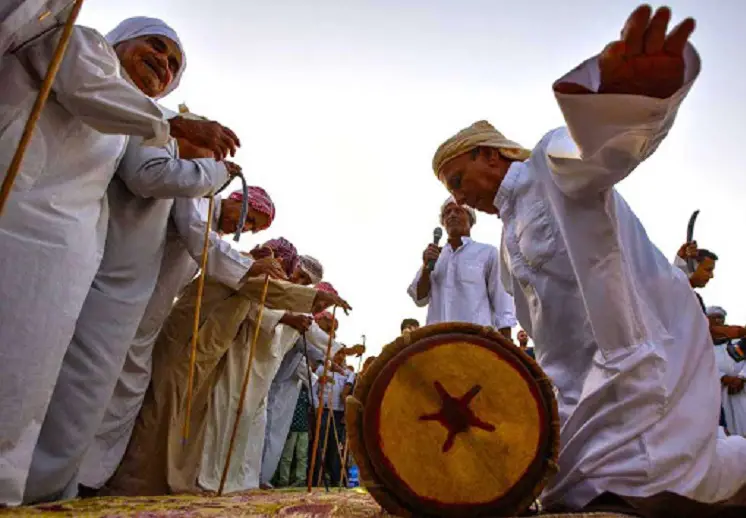
Like to go on an Adventure in Qeshm Island?
Then hop on our 3-day Hormoz and Qeshm tour or our Hormoz, Qeshm and Hengam tour.


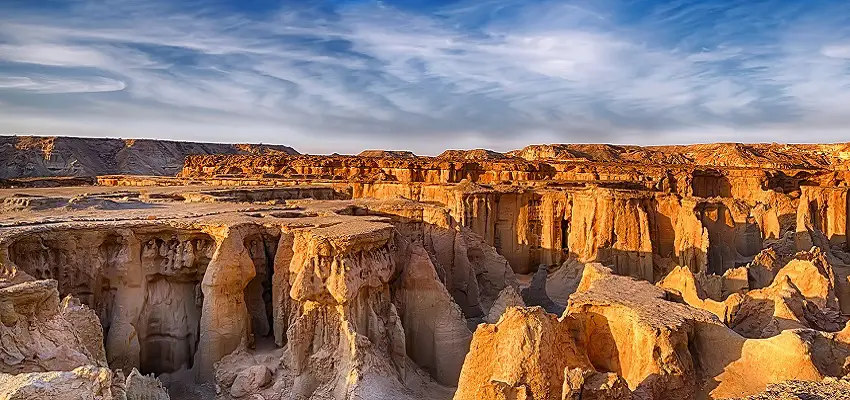
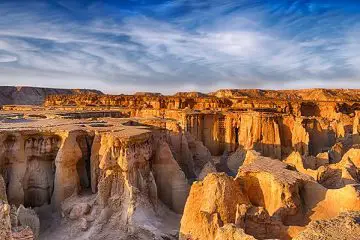
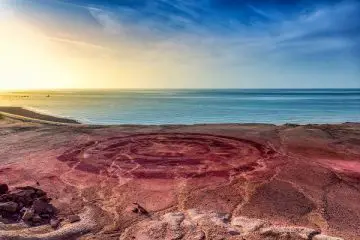


Comments